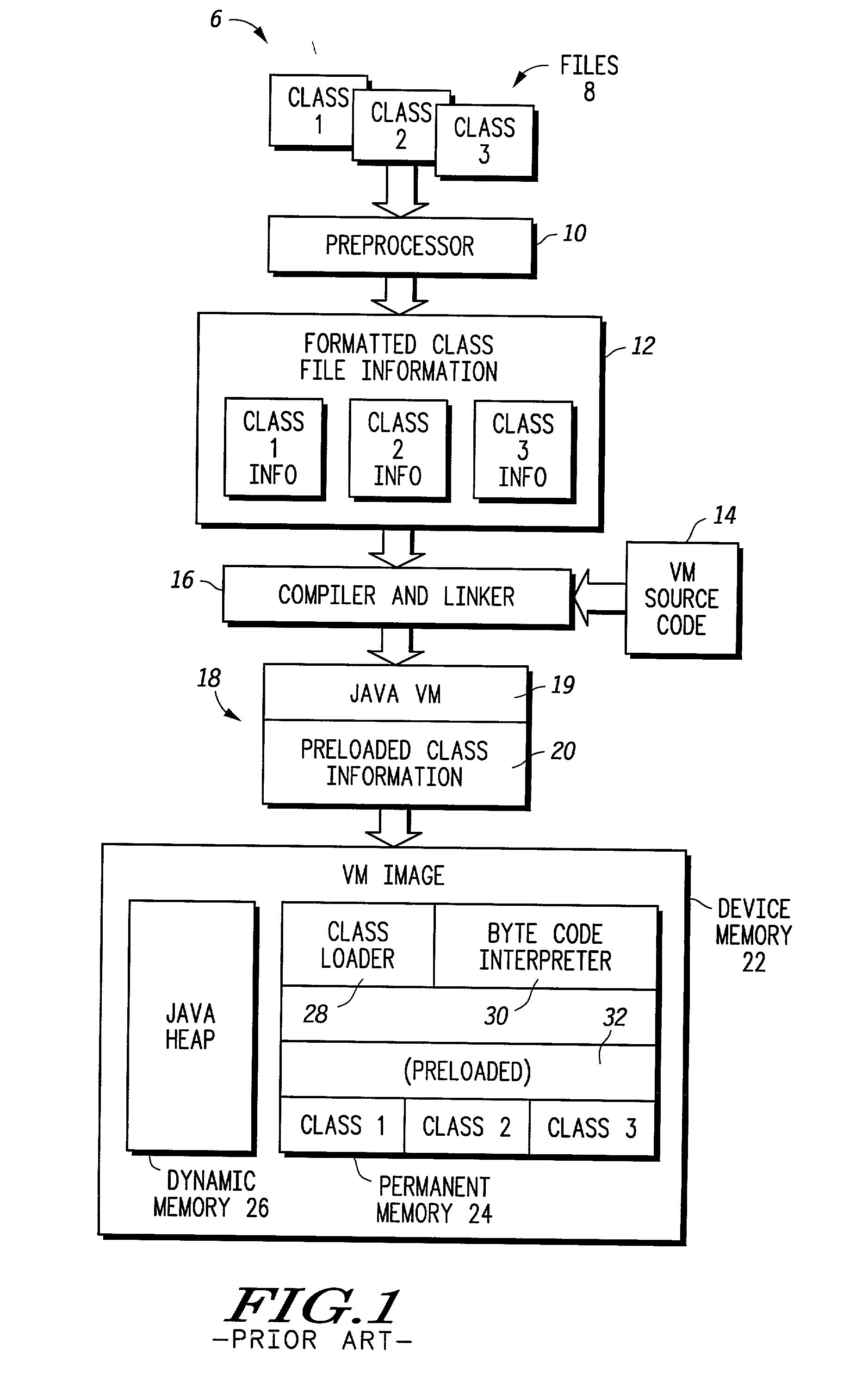Method and device for creating and using pre-internalized program files
a program file and pre-internalization technology, applied in the field of program file processing in a high-level language, can solve the problems of reducing the amount of code that a device is able to store, affecting the computing capabilities of the device, and the method does not generally extend to the subsequent installation of additional applications by the user
- Summary
- Abstract
- Description
- Claims
- Application Information
AI Technical Summary
Problems solved by technology
Method used
Image
Examples
Embodiment Construction
[0027] For ease of illustration, the Java programming language serves as an exemplar; however, the present invention is applicable to other programming languages as well. Several terms will be used herein with reference to a system having embedded Java program(s). Memory refers to Read Only Memory (ROM), writable memory, and readable-writable memory. Readable-writable memory may be Random Access Memory (RAM), Electrically-Erasable-Programmable Memory (EEPROM), Programmable Memory (PROM), including both One-Time PROM (OTPROM) and Erasable PROM (EPROM), Flash Memory, etc. The term "dynamic memory" is used to refer to memory that is dynamically allocated and does not retain stored information or data when power is removed from the device, such as RAM. The term "permanent memory" is used to refer to memory that is treated as read-only during execution, and retains stored information or data when power is removed from the device, such as ROM.
[0028] The present invention provides a method...
PUM
 Login to View More
Login to View More Abstract
Description
Claims
Application Information
 Login to View More
Login to View More - R&D
- Intellectual Property
- Life Sciences
- Materials
- Tech Scout
- Unparalleled Data Quality
- Higher Quality Content
- 60% Fewer Hallucinations
Browse by: Latest US Patents, China's latest patents, Technical Efficacy Thesaurus, Application Domain, Technology Topic, Popular Technical Reports.
© 2025 PatSnap. All rights reserved.Legal|Privacy policy|Modern Slavery Act Transparency Statement|Sitemap|About US| Contact US: help@patsnap.com



